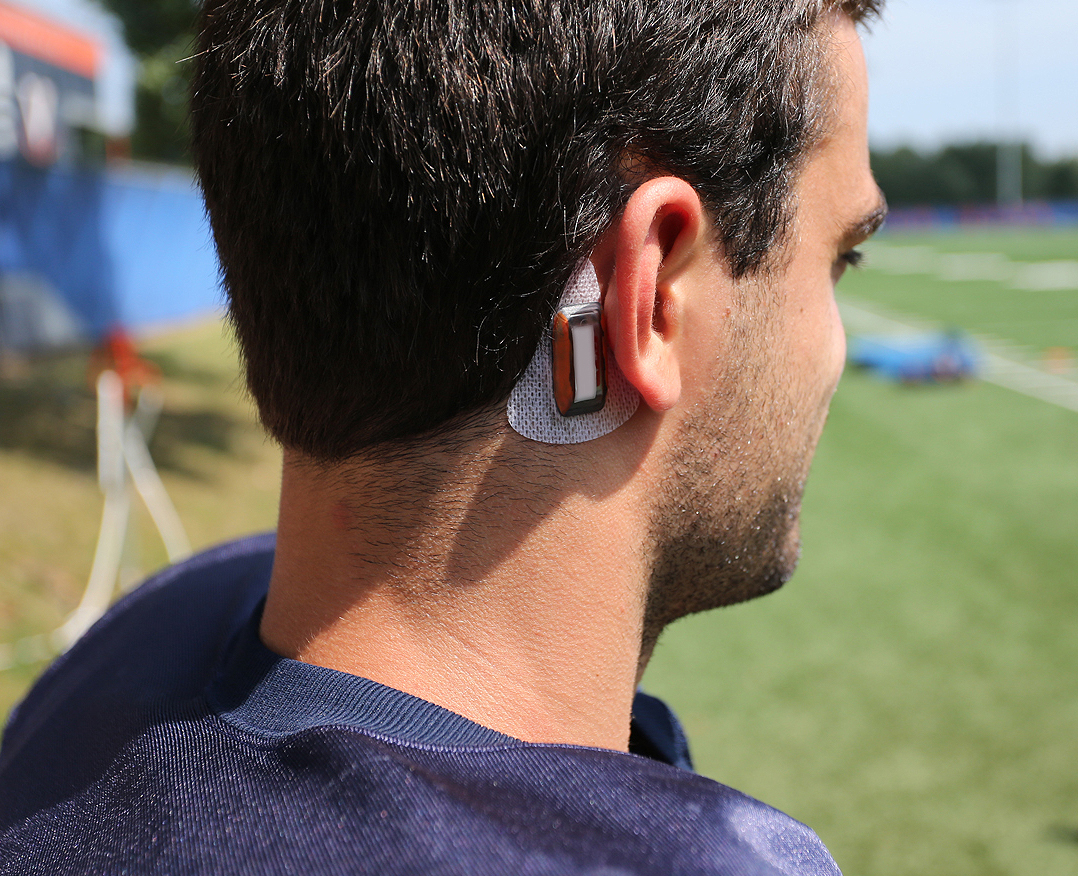To better measure the effects and causes of sports concussions, researchers from the University of Virginia’s School of Medicine and Curry School of Education plan to track 130 student-athletes in three sports over the next year.
Neuroradiologist Dr. Jason Druzgal is leading the study’s multidisciplinary research team, which includes neuropsychologist Donna Broshek, pediatric neurologist Dr. Howard Goodkin and kinesiologist Susan Saliba. They will follow football, men’s and women’s soccer and men’s and women’s lacrosse student-athletes from U.Va.; the study will also track student-athletes in the same sports from St. Anne’s-Belfield, a Charlottesville-area high school.
The goal, Broshek said: “Can we figure out some steps to keep the players safe without drastically modifying their sports?”
At the beginning of their respective seasons, participating football, soccer and lacrosse student-athletes undergo a baseline functional MRI screening and a computerized neurocognitive test.
During each practice and game during the season, the participating student-athletes wear a new adhesive patch with a sensor behind their ear made by X2 Biosystems that captures impacts to the head. The patch enables researchers to study forces on the head in sports, such as soccer, where helmets are not worn.
Following the season, the functional MRI and neurocognitive tests are repeated to measure changes to the student-athletes’ brains. The research team will then take the data from the sensors and correlate it with the functional MRI scans and the neurocognitive tests in hopes of learning more about the effects of impacts to the head – and repeated impacts to the head – on student-athletes.
Among the questions they hope to address:
- How to more accurately diagnose concussions. Researchers hope the study data will be a start toward developing more definitive criteria for diagnosing a concussion. “We want to develop objective tools to determine whether someone has suffered a concussion,” Druzgal said.
- How do blows to the head that don’t cause concussions affect the brain? Broshek hopes that using the sensors to document every impact to the head – not just those that cause concussions – will provide a more complete picture of what causes injuries to the brain. “There could be a marker to pull an athlete out for a neurological exam even if they don’t sustain a ‘big hit,’” she said.
- How do impacts to the head affect younger athletes and players in sports other than football? While NFL players have received a great deal of attention, there’s less data on players in other sports as well as women. There’s also less information about the effects on younger student-athletes, whose brains are still developing. “We don’t know who for or when to target intervention,” Goodkin said.
For information about sports concussions, call U.Va.’s Brain Injury and Sports Concussion Institute, part of U.Va.’s Neurocognitive Assessment Laboratory, at 434-924-2718.
Media Contact
Article Information
November 7, 2013
/content/study-aims-better-understand-concussions-high-school-college-athletes

